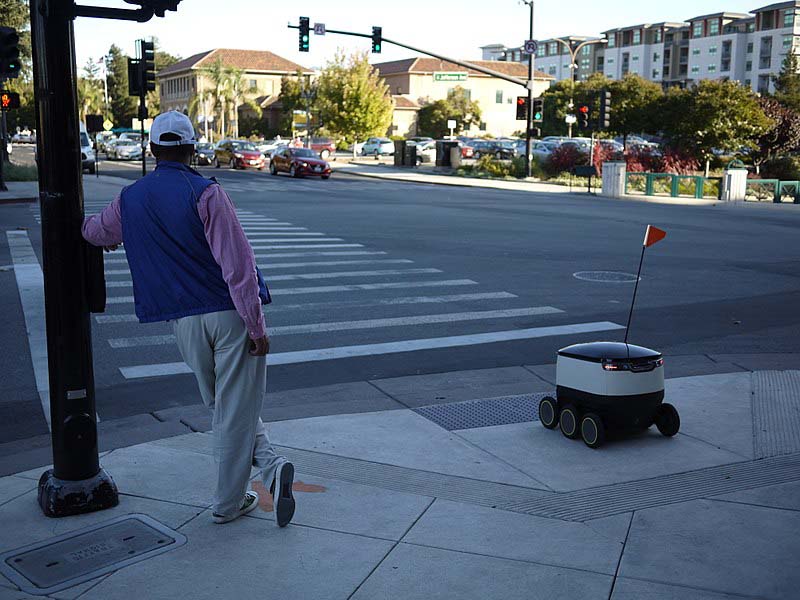Can Mapping Sidewalks Increase Ridership?
- Author: William Reckley
- Date: December 31, 2019
What is sidewalk mapping, and how can mobility management practitioners use it to understand the accessibly of our built environment?…
New technologies are being piloted on our streets at breakneck pace, but how can we ensure their implementation doesn’t put community members at risk?
Imagine you’re crossing the street, but midway through barriers rise on both sides of the crosswalk to block your path. You’re stuck in the street, cars start zooming by and you’re still trapped, waiting. This was the situation Emily Ackerman, a Ph.D. student at the University of Pittsburgh and disability rights activist, found herself in back in October. Ackerman, who uses a wheelchair, was blocked by a delivery robot pilot testing on the Pitt campus that had stopped in the curb cut waiting for a clear path across. While Ackerman was able to climb the curb to get out of the street, the experience highlighted the real dangers that testing new technology in public space can bring when not all of the consequences are completely thought out.

(Chris Down | Wikimedia Commons)
This situation has unfortunately been playing out in different forms for decades. However, with the recent introduction of so many new micro-mobility products in many communities across the country, we have added another level of complexity for some of the most vulnerable in our communities to simply get around safely. However, Ackerman acknowledges the benefits that these new technologies can bring. The delivery robot that blocked her path, for example, could be extremely useful for bringing medication or small goods to those with mobility challenges. The promise of these new creations is great, but how can we encourage innovation, while ensuring the safety and convenience of the current system are maintained?
Primarily, Ackerman and other activists have advocated for more diverse engineering teams that work on the projects. Diversity can help uncover issues that not everyone would notice. Remember the racist hand soap dispenser from a few years ago? Even Ackerman, an engineer herself, says this problem is bigger than design and engineering. She posits that the “burden of change” should not be on community members. Designers should carry the burden of ensuring their creations do not put bystanders at risk. We have also learned time and time again that designing our world for those with disabilities is beneficial to everyone, new technology should be no different.
You can see Ackerman’s original tweet thread here and read her article in CityLab describing her experience here.
Have more mobility news that we should be reading and sharing? Let us know! Reach out to Sage Kashner (kashner@ctaa.org).
Please confirm you want to block this member.
You will no longer be able to:
Please note: This action will also remove this member from your connections and send a report to the site admin. Please allow a few minutes for this process to complete.